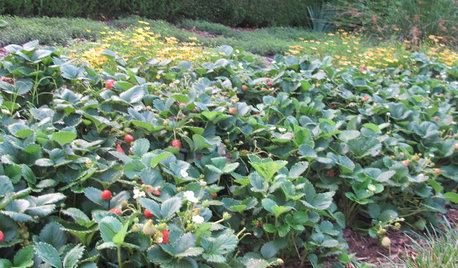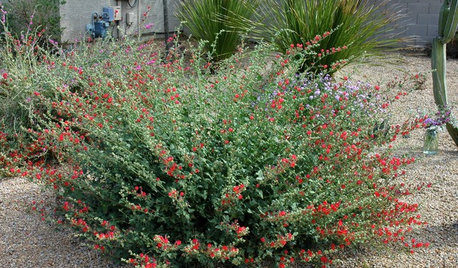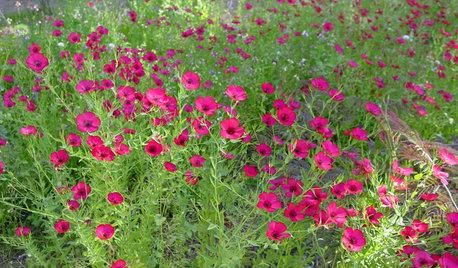Fertilizing Containerized Trees
This subject has been discussed frequently, but usually in piecemeal fashion on various forums. Prompted originally by a question about fertilizers in another's post, I decided to collect a few thoughts & present a personal overview. I maintain some 300 trees in containers covering at least 40 genera and 100 species. Some of my containerized trees are hundreds of years old, and many I've personally maintained as healthy specimens for more than 20 years. I'm often called upon to speak/lecture, conduct workshops, or do demos for various clubs, (including MG clubs) and other organizations. Often the subject I speak about is related to trees. The workshops and demos are usually bonsai related, but I also demonstrate and speak about pruning and maintaining trees in containers and container culture in general. Everything I have set down in the following text is verifiable through various sources and validated by my own practical experience.
Though this offering is written to include almost all plants we might have occasion to grow in containers, we should note there is little difference in the types or ratios of nutrients plants use, from trees to flowers to vegetables ..... They all use the same elements as building blocks in roughly the same ratios.
Fertilizer Program - Containerized Plantscolor>size>
Let me begin with a brief and hopefully not too technical explanation of how plants absorb water from the soil and how they obtain the nutrients/solutes that are dissolved in that water. Most of us remember from our biology classes that cells have membranes that are semi-permeable. That is, they allow some things to pass through the walls, like water and select elements in ionic form dissolved in the water, while excluding other materials like large organic molecules. Osmosis is a natural phenomenon that is natures attempt at creating a balance (isotonicity) in the concentration of solutes in water inside and outside of cells. Water and ionic solutes will pass in and out of cell walls until an equilibrium is reached and the level of solutes in the water surrounding the cell is the same as the level of solutes in the cell.
This process begins when the finest roots absorb water molecule by molecule at the cellular level from the surface of soil particles and transport it, along with its nutrient load, throughout the plant. I want to keep this simple, so IÂll just say that the best water absorption occurs when the level of solutes in soil water is lowest, and in the presence of good amounts of oxygen (this is where I get to plug a well-aerated and free-draining soil), ;o). Deionized (distilled) water contains no solutes, and is easiest for plants to absorb. Of course, since distilled water contains no nutrients, using it alone practically guarantees deficiencies of multiple nutrients as the plant is shorted the building materials (nutrients) it needs to manufacture food, keep its systems orderly, and keep its metabolism running smoothly.
We already learned that if the dissolved solutes in soil water are low, the plant may be well-hydrated, but starving; however, if they are too high, the plant may have a large store of nutrients in the soil, but because of osmotic pressure, the plant may be unable to absorb the water and could die of thirst in a sea of plenty. When this condition occurs, and is severe enough (high concentrations of solutes in soil water), it causes fertilizer burn (plasmolysis), a condition seen when plasma is torn from cell walls as the water inside the cell exits to maintain solute equilibrium with the water surrounding the cell.
Our job, because you cannot depend on an adequate supply of nutrients from the organic component of a container soil, is to provide a solution of dissolved nutrients in a concentration high enough to supply nutrients in the adequate to luxury range, yet still low enough that it remains easy for the plant to take up enough water to be well-hydrated and free of drought stress. Electrical conductivity (EC) of, and the level of TDS (total dissolved solids) in the soil solution is a reliable way to judge the adequacy of solutes and the plantÂs ability to take up water. There are meters that measure these concentrations, and for most plants the ideal range of conductivity is from 1.5 - 3.5 mS, with some, like tomatoes, being as high as 4.5 mS. This is more technical than I wanted to be, but I added it in case someone wanted to search "mS" or "EC". Most of us, including me, will have to be satisfied with simply guessing at concentrations, but understanding how plants take up water and fertilizer, as well as the effects of solute concentrations in soil water is an important piece of the fertilizing puzzle.
Now, some disconcerting news - you have listened to all this talk about nutrient concentrations, but what do we supply, when, and how do we supply them? We have to decide what nutrients are appropriate to add to our supplementation program, but how? Most of us are just hobby growers and cannot do tissue analysis to determine what is lacking. We can be observant and learn the symptoms of various nutrient deficiencies though - and we CAN make some surprising generalizations.
What if I said that the nutritional needs of all plants is basically the same and that one fertilizer could suit almost all the plants we grow in containers - that by increasing/decreasing the dosage as we water, we could even manipulate plants to bloom and fruit more abundantly? ItÂs really quite logical, so please let me explain.
Tissue analysis of plants will nearly always show NPK to be in the ratio of approximately 10:1.5:7. If we assign N the constant of 100, P and K will range from 13-19 and 45-70 respectively. (IÂll try to remember to make a chart showing the relative ratios of all the other 13 essential nutrients that donÂt come from the air at the end of what I write.) All we need to do is supply nutrients in approximately the same ratio as plants use them, and in adequate amounts to keep them in the adequate to luxury range at all times.
Remember that we can maximize water uptake by keeping the concentrations of solutes low, so a continual supply of a weak solution is best. Nutrients donÂt often just suddenly appear in large quantities in nature, so the low and continual dose method most closely mimics the nutritional supply Mother Nature offers. If you decide to adopt a "fertilize every time you water" approach, most liquid fertilizers can be applied at ¾ to 1 tsp per gallon for best results. If you decide thatÂs too much work, try halving the dose recommended & cutting the interval in half. You can work out the math for granular soluble fertilizers and apply at a similar rate.
The system is rather self regulating if fertilizer is applied in low concentrations each time you water, even with houseplants in winter. As the plantÂs growth slows, so does its need for both water and nutrients. Larger plants and plants that are growing robustly will need more water and nutrients, so linking nutrient supply to the water supply is a win/win situation all around.
Another advantage to supplying a continual low concentration of fertilizer is it eliminates the tendency of plants to show symptoms of nutrient deficiencies after they have received high doses of fertilizer and then been allowed to return to a more favorable level of soil solute concentrations. Even at perfectly acceptable concentrations of nutrients in the soil, plants previously exposed to high concentrations of fertilizer readily display these symptoms.
You will still need to guard against watering in sips, and that habitÂs accompanying tendency to allow solute (salt) accumulation in soils. Remember that as salts accumulate, both water and nutrient uptake is made more difficult and finally impaired or made impossible in severe cases. Your soils should always allow you to water so that at least 10-15% of the total volume of water applied passes through the soil and out the drain hole to be discarded. This flushes the soil and carries accumulating solutes out the drain hole.
I have recently switched to a liquid fertilizer with micro-nutrients in a 12:4:8 NPK ratio. Note how closely this fitÂs the average ratio of NPK content in plant tissues, noted above (10:1.5:7). If the P looks a little high at 4, consider that in container soils, P begins to be more tightly held as pH goes from 6.5 to below 6.0, which is on the high side of most container soilÂs pH, so the manufacturer probably gave this some careful consideration. Also, P and K percentages shown on fertilizer packages are not the actual amount of P or K in the blend. The percentage of P on the package is the percentage of P2O5 (phosphorous pentoxide) and you need to multiply the percentage shown by .43 to get the actual amount of P in the fertilizer. Similarly, the K level percentage shown is actually the level of K2O ( potassium oxide) and must be multiplied by .83 to arrive at the actual amount of K supplied.
To answer the inevitable questions about specialty fertilizers and "special" plant nutritional requirements, let me repeat that plants need nutrients in roughly the same ratio. Ratio is an entirely a separate consideration from dosage. YouÂll need to adjust the dosage to fit the plant and perhaps strike a happy medium in containers that have a diversity of material.
If nutrient availability is unbalanced - if plants are getting more than they need of certain nutrients, but less than they need of others, the nutrient they need the most will be the one that limits growth. There are 6 factors that affect plant growth and yield; they are: air water light temperature soil or media nutrients. Liebig's Law of Limiting Factors states the most deficient factor limits plant growth and increasing the supply of non-limiting factors will not increase plant growth. Only by increasing most deficient nutrient will the plant growth increase. There is also an optimum combination?ratio of the nutrients and increasing them, individually or in various combinations, can lead to toxicities.
When individual nutrients are available in excess, it not only unnecessarily contributes to the total volume of solutes in the soil solution, which makes it more difficult for the plant to absorb water and nutrients, it also often creates an antagonistic deficiency of other nutrients as toxicity levels block a plant's ability to take up other nutrients. E.g., too much Fe (iron) can cause a Mn (manganese) deficiency, with the converse also true, Too much Ca (calcium) can cause a Mg (magnesium) deficiency. Too much P (phosphorous) can cause an insoluble precipitate with Fe and make Fe unavailable. It also interferes with the uptake of several other micro-nutrients. You can see why itÂs advantageous to supply nutrients in as close to the same ratio in which plants use them and at levels not so high that they interfere with water uptake. I know IÂm repeating myself here, but this is an important point.
What about the high-P "Bloom Booster" fertilizers you might ask? To induce more prolific flowering, a reduced N supply will have more and better effect than the high P bloom formulas. When N is reduced, it slows vegetative growth without reducing photosynthesis. Since vegetative growth is limited by a lack of N, and the photosynthetic machinery continues to turn out food, it leaves an expendable surplus for the plant to spend on flowers and fruit. Plants use about 6 times more N than P, so fertilizers that supply more P than N are wasteful and more likely to inhibit blooms (remember that too much P inhibits uptake of Fe and many micro-nutrients - it raises pH unnecessarily as well, which could also be problematic). Popular "bloom-booster" fertilizers like 10-52-10 actually supply about 32x more P than your plant could ever use (in relationship to how much N it uses) and has the potential to wreak all kinds of havoc with your plants.
The fact that different species of plants grow in different types of soil where they are naturally found, does not mean that one needs more of a certain nutrient than the other. It just means that the plants have developed strategies to adapt to certain conditions, like excesses and deficiencies of particular nutrients.
Plants that "love" acid soils, e.g., have simply developed strategies to cope with those soils. Their calcium needs are still the same as any other plant and no different from the nutrient requirements of plants that thrive in alkaline soils. The problem for acid-loving plants is that they are unable to adequately limit their calcium uptake, and will absorb too much of it when available, resulting in cellular pH-values that are too high. Some acid-loving plants also have difficulties absorbing Fe, Mn, Cu, or Zn, which is more tightly held in alkaline soils, another reason why they thrive in low pH (acid) soils.
So, If you select a fertilizer that is close in ratio to the concentration of major elements in plant tissues, youÂre going to be in good shape. Whether the fertilizer is furnished in chemical or organic form matters not a whit to the plant. Ions are ions, but there is one major consideration. Chemical fertilizers are available for immediate uptake while organic fertilizers must be acted on by passing through the gut of micro-organisms to break them down into usable elemental form. Since microorganism populations are affected by cultural conditions like moisture/air levels in the soil, soil pH, fertility levels, temperature, etc., they tend to follow a boom/bust cycle in container culture, which has an impact on the reliability and timing of delivery of nutrients supplied in organic form. Nutrients locked in hydrocarbon chains cannot be relied upon to be available when the plant needs them. This is particularly an issue with the immobile nutrients that must be present in the nutrient stream at all times for the plant to grow normally.
What is my approach? I have been very happy with Miracle-Gro 12-4-8 all purpose liquid fertilizer, or 24-8-16 Miracle-Gro granular all-purpose fertilizer - both are completely soluble. I incorporate a granular micro-nutrient supplement in my soils when I make them (Micromax) or use a soluble micro-nutrient blend (STEM). I would encourage you to make sure your plants are getting all the micro-nutrients. More readily available than the supplements I use is Earth JuiceÂs ÂMicroblastÂ. Last year, I discovered a fertilizer by Dyna-Gro called Foliage-Pro 9-3-6. It is a 3:1:2 ratio like I like and has ALL the primary macro-nutrients, secondary macro-nutrients (Ca, Mg, S) and all the micro-nutrients. It performed very well for me.
When plants are growing robustly, I try to fertilize my plants weakly (pun intended) with a half recommended dose of the concentrate at half the suggested intervals. When plants are growing slowly, I fertilize more often with very weak doses. ItÂs important to realize your soil must drain freely and you must water so a fair amount of water drains from your container each time you water to fertilize this way. This year my display containers performed better than they ever have in years past & they were still all looking amazingly attractive at the beginning of Oct when I finally decided to dismantle them because of imminent cold weather. I attribute results primarily to a good soil and a healthy nutrient supplementation program.
What would I recommend to someone who asked what to use as an all-purpose fertilizer for nearly all their container plantings? If you can find it, a 3:1:2 ratio soluble liquid fertilizer (24-8-16, 12-4-8, 9-3-6 are all 3:1:2 ratio fertilizers) that contains all the minor elements would great.
How plants use nutrients - the chart I promised:
I gave Nitrogen, because it's the largest nutrient component, the value of 100. Other nutrients are listed as a weight percentage of N.
N 100
P 13-19 (16) 1/6
K 45-80 (62) 3/5
S 6-9 (8) 1/12
Mg 5-15 (10) 1/10
Ca 5-15 (10) 1/10
Fe 0.7
Mn 0.4
B(oron) 0.2
Zn 0.06
Cu 0.03
Cl 0.03
M(olybden) 0.003
To read the chart: P - plants use 13-19 parts of P or an average of about 16 parts for every 100 parts of N, or 6 times more N than P. Plants use about 45-80 parts of K or an average of about 62 parts for every 100 parts of N, or about 3/5 as much K as N, and so on.
Thanks for reading.
Al
















danab_z9_la
Michaela
Related Professionals
Jennings Landscape Architects & Landscape Designers · Brookfield Landscape Contractors · Eustis Landscape Contractors · Pleasant Hill Landscape Contractors · Pueblo West Landscape Contractors · Merrifield Landscape Contractors · Suisun City Landscape Contractors · Aventura Decks, Patios & Outdoor Enclosures · Fort Pierce Decks, Patios & Outdoor Enclosures · Portage Decks, Patios & Outdoor Enclosures · Salisbury Decks, Patios & Outdoor Enclosures · Antelope Fence Contractors · Draper Fence Contractors · Shorewood Fence Contractors · Tavares Fence Contractorstapla (mid-Michigan, USDA z5b-6a)Original Author
Michaela